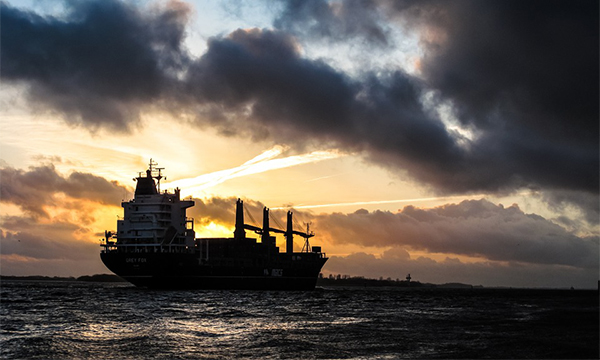Port Tracker report shows solid volumes but concerns over tariffs are looming
When assessing the current and future state of United States-bound retailer container shipments, there is a short-term outlook and a long-term outlook, based on the findings and takeaways of the Port Tracker report issued by the National Retail Federation (NRF) and maritime consultancy Hackett Associates.
When assessing the current and future state of United States-bound retailer container shipments, there is a short-term outlook and a long-term outlook, based on the findings and takeaways of the Port Tracker report issued by the National Retail Federation (NRF) and maritime consultancy Hackett Associates.
The short-term focus has to do with the timing of the Lunar New Year, which ran from February 16 to March 2, and is expected to impact March volumes. And the longer-term focus centers on recently-enacted tariffs on steel and aluminum imports made official by the White House this week, which have the potential to impact future port volumes, among other factors like hinder consumer spending activity.
The ports surveyed in the report include: Los Angeles/Long Beach, Oakland, Tacoma, Seattle, Houston, New York/New Jersey, Hampton Roads, Charleston, and Savannah, Miami, Jacksonville, and Fort Lauderdale, Fla.-based Port Everglades. Authors of the report explained that cargo import numbers do not correlate directly with retail sales or employment because they count only the number of cargo containers brought into the country, not the value of the merchandise inside them, adding that the amount of merchandise imported provides a rough barometer of retailers’ expectations.
“With steel and aluminum tariffs already in place, new tariffs on goods from China being threatened and the ongoing threat of NAFTA withdrawal, we could very quickly have a trade war on our hands,” NRF Vice President for Supply Chain and Customs Policy Jonathan Gold said in a statement. “The immediate impact would be higher prices for American consumers that would throw away the gains of tax reform and put a roadblock in front of economic growth. But in the long term we could see a loss in cargo volume and all the jobs that depend on it, from dockworkers on down through the supply chain.”
For January, the most recent month for which data is available, U.S.-based retail container ports covered in the report handled 1.73 million TEU (Twenty-Foot Equivalent Units, which was 0.2% ahead of December’s 1.72 million TEU and up 1.8% annually.
Port Tracker expects February to be up 13.7% annually at 1.66 million TEU, with March pegged at 1.53 million TEU for a 1.8% decline. April and May are expected to come in at 1.7 million TEU for a 4.7% gain and 1.79 million TEU for a 2.5% gain, respectively.
The report said it expects the first half of 2018 to be up 4.1% annually at 10.2 million TEU.
The tariffs announced by the White House have the potential to present a “clear and present danger to global trade, according to Hackett Associates Founder Ben Hackett.
“What started out as announcement of tariffs on steel and aluminum by President Trump is rapidly turning into a potential trade war,” wrote Hackett. “The unnerving thing about this is the false premise on which the tariffs are based. The danger is that a potential tariff war would have a negative impact on cargo growth to the detriment of both the consumer and U.S. industry. The likelihood of an increase in exports evaporates as well, killing off any chance for an improvement in the balance of trade. The art of the deal does not work in this environment and can cause both strategic and economic damage as we lash out at our closest partners.”
Hackett added that the timing for these tariffs is ill-advised, given the myriad signs of positive economic momentum intact, including solid manufacturing output, improving GDP, and steady consumer spending.













